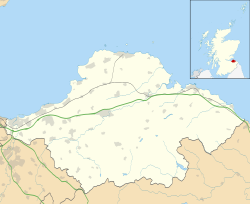| Elphinstone | |
|---|---|
 | |
Location within East Lothian | |
| Population | 590 (2020) [1] |
| OS grid reference | NT396702 |
| Council area | |
| Lieutenancy area | |
| Country | Scotland |
| Sovereign state | United Kingdom |
| Post town | TRANENT |
| Postcode district | EH33 |
| Dialling code | 01875 |
| Police | Scotland |
| Fire | Scottish |
| Ambulance | Scottish |
| UK Parliament | |
| Scottish Parliament | |
Elphinstone is a village in East Lothian, Scotland, southwest of Tranent. The ruins of Elphinstone Tower, the former seat of the Elphinstone family, lie nearby.

